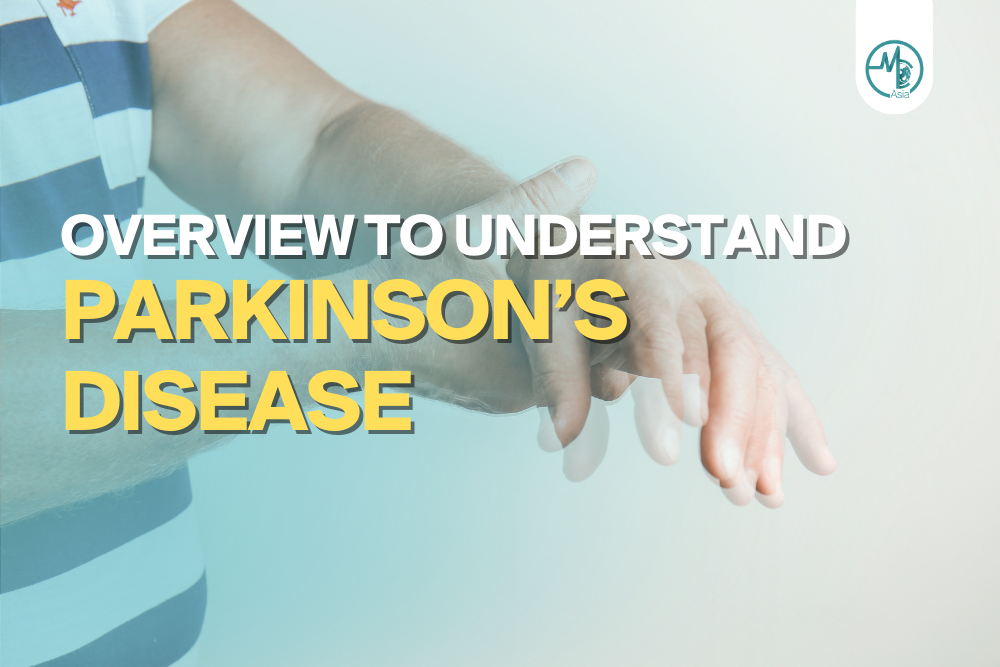Parkinson’s disease, a progressive neurological disorder, affects millions worldwide. Characterised by its impact on movement, this disease presents unique challenges and requires a deeper understanding.
Here’s an insightful look into Parkinson’s disease, its causes, symptoms, treatment, and ongoing research.
What is Parkinson’s Disease?
Parkinson’s disease is a degenerative disorder of the central nervous system, primarily affecting the motor system. It results from the loss of dopamine-producing brain cells. The cause of this cell death remains largely unknown, making Parkinson’s a disease of significant research and interest in the medical community.
About one in eight patients have symptoms before the age of 50 and one in 20 before they reach 40, said Associate Professor Prakash Kumar Manharlal, a senior consultant in neurology at the National Neuroscience Institute (NNI). NNI treats about 4000 Parkinson’s Disease patients.
Early Signs and Symptoms
The early stages of Parkinson’s disease often manifest subtly and gradually worsen over time. Key symptoms include:
- Tremor: A trembling in the hands, arms, legs, jaw, or head.
- Rigidity: Stiffness in the limbs and trunk.
- Bradykinesia: Slowness of movement.
- Postural Instability: Impaired balance and coordination.
Patients may experience difficulty walking, talking, and completing simple tasks as the disease progresses.
The Cause: A Mystery to Unravel
While the exact cause of Parkinson’s is unknown, it is believed to be a combination of genetic and environmental factors. Exposure to certain toxins and a history of head injury may slightly increase the risk.
Diagnosing Parkinson’s Disease
Diagnosing Parkinson’s can be challenging, as there are no standard lab tests for the disease. Neurologists typically rely on medical history, a review of symptoms, and neurological and physical examinations. In some cases, imaging tests like MRI or PET scans are used to rule out other conditions.
The Role of Genetics
Research indicates that about 10% of Parkinson’s cases are hereditary. Genetic mutations have been identified, but not everyone with these mutations necessarily develops Parkinson’s, suggesting other factors play a role.
Treatment Options
While there is no cure for Parkinson’s disease, a range of treatments can help control symptoms:
- Medication: Drugs such as Levodopa and Carbidopa can increase or substitute for dopamine, alleviating many motor symptoms.
- Deep Brain Stimulation: In advanced cases, this surgical procedure implants electrodes in specific parts of the brain to help control movement.
- Physical Therapy: Exercises can improve mobility, balance, and quality of life.
- Lifestyle Changes: A healthy diet, regular exercise, and active social engagement are beneficial.
Living with Parkinson’s Disease
Living with Parkinson’s requires adapting to new challenges. Support from family, friends, and support groups can be invaluable. Regular consultations with healthcare providers are essential to manage the progression and symptoms of the disease.
Ongoing Research
Scientists are exploring various avenues to understand better and treat Parkinson’s:
- Neuroprotective Therapies: Seeking treatments to protect and preserve nerve cells.
- Stem Cell Research: Investigating the potential of stem cells to repair or replace damaged brain cells.
- Genetic Studies: Understanding how genetic factors contribute to the disease.
Conclusion
Parkinson’s disease, a journey of both challenges and discoveries, continues to be an active area of research. Although currently incurable, advancements in treatment and support have significantly improved the quality of life for those affected. Understanding Parkinson’s is crucial, not just for patients and their families, but for society as a whole, as we strive towards a future where this disease can be effectively managed or even cured.














